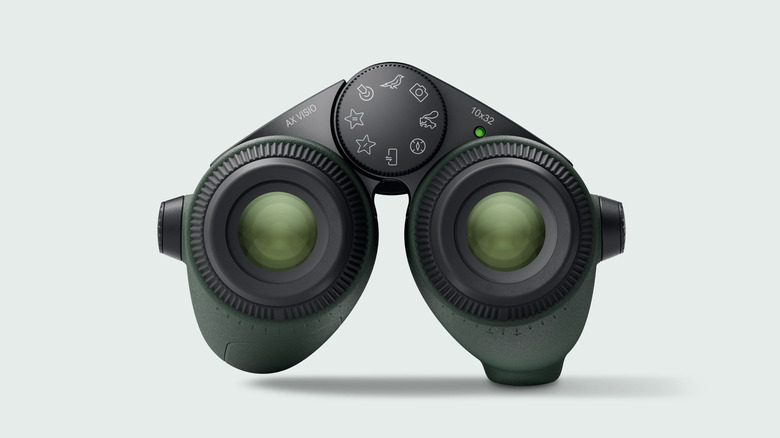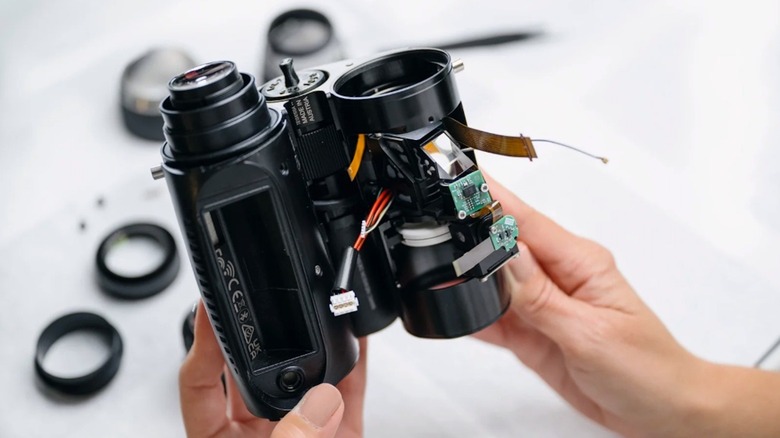These Smart Binoculars Can Help You Identify Birds On Your Next Camping Trip
Birdwatching is often a thankless task, considering that there are estimated to be over 10,000 species of birds in the world, none of which stay in one position for very long. So unless you've memorized all 10,000-plus of them, it can take a moment to flip open your little birdwatching guide and find what you're looking at. By the time you look back up, the bird is likely gone, and all the remains of it is a dollop of white poop.
Behold the Swarovski Optic AX Visio binoculars, a new pair of AI-supported binoculars that can seemingly identify over 9,000 species of birds before they fly away. Launched at CES 2024 in Las Vegas, Swarovski says these Marc Newson-designed specs identify the birds by combining "integrated operating and object-recognition system," along with a Neural Processing Unit that "ensures exceptionally fast processing of relevant information for object recognition."
Identifying a bird
To use the binoculars, users simply point them away from their feet and toward a bird and allow the red target to hover over one. Within a few seconds, a name like tufted titmouse or ruddy turnstone pops up — as well as other species with less silly-sounding names. A built-in GPS helps the processor identify the types of species that may be in your region. So if you're in Cleveland and see a bird that's indigenous to Japan, it may be lost and need directions.
The 32 mm binoculars feature 10x magnification with a 1,000-yard field of vision. They can take pictures and video at 13MP and 1080p, and the media can be transferred to a connected smartphone with the Swarovski app. If you're with a friend, and they can't see the bird after repeatedly pointing at it, a "share discoveries" function allows users to place arrow markers in the viewfinder display so your friend can finally see it and say, "Oh."
While the Optic AX Visio binoculars are unlikely to scare birds away, the price tag of approximately $5,000 may ward off people. That's about one dollar for every two species of birds. But if you get a few thousand birds to chip in, it probably won't be so bad.

